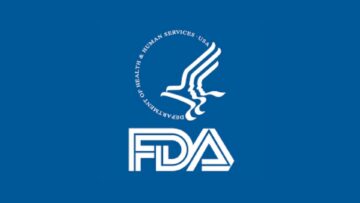The new article highlights the aspects related to be taken into consideration with respect to the classification of active medical devices.

Table of Contents
The South African Health Products Regulatory Authority (SAHPRA), a country’s regulatory agency in the sphere of healthcare products, has published a guidance document dedicated to the existing classification system. The document describes in detail the classification rules to be applied for general and in vitro diagnostic (IVD) medical devices intended to be marketed and used in the country. At the same time, it is important to mention that the present guidance and provisions thereof are non-binding in their legal nature, nor are intended to introduce new rules or impose new obligations, but rather to provide additional clarifications regarding the existing regulatory requirements, as well as recommendations to be taken into consideration by medical device manufacturers and other parties involved in order to ensure compliance thereto. The authority also reserves the right to make changes to the guidance, should such changes be reasonably necessary to reflect corresponding amendments to the underlying legislation.
The document describes in detail the rules to be applied for different types of medical devices, including, inter alia, active medical devices
Active Medical Devices: Key Points
First of all, the guidance provides a flowchart summarising the classification rules to be applied for active medical devices. According to the said flowchart, all active medical devices that are not covered by other classification rules are Class A medical devices, while active medical devices intended for therapy, to administer or exchange energy, active medical devices intended for diagnostic purposes, as well as the ones supplying energy for imaging purposes and monitoring vital physiological process and active medical devices intended to administer/remove medicines and substances to or from the body are mostly Class C medical devices.
For the purpose of guidance, an “active medical device” stands for any medical device of which the operation depends on a source of electrical energy or a source of power other than that directly generated by the human body or gravity and which acts by converting this to energy but excluding medical devices intended to transmit energy, substances or other elements between an active medical device and the user, without any significant changes in the energy, substance or other element being transmitted.

Active Medical Devices for Therapy
As an additional category, the document distinguishers active medical devices for therapy, defined as an active medical device that is intended by the manufacturer to be used either alone or in combination with another medical device to support, modify, replace, or restore biological functions or structures for the purpose of treating or alleviating an illness, injury or disability. The authority further explained that the above rule applies to products that are electrical equipment used in surgery, as well as those used in specialized treatments and stimulation devices.
In accordance with the existing classification rules for active medical devices, the following classification shall apply:
- A product intended to be used for therapy to administer energy is a Class B medical device;
- A product intended to administer energy in a potentially hazardous way is a Class C medical device;
- A product intended to control or monitor, or influence the operations of an active medical device used for therapy as covered by the above provisions is a Class C medical device.
Active Medical Devices for Diagnosis
The document also distinguishes an “active medical device for diagnosis” defined as an active medical device that is intended by the manufacturer to be used on a human, either alone or in combination with another medical device, to supply information for the purpose of detecting, diagnosing, monitoring or treating physiological conditions, states of health, illness or congenital deformities. According to the guidance, the said rule also applies to ultrasound devices and those intended to capture physiological signals and diagnostic radiology.
Under the general rule, active medical devices for diagnosis are Class A medical devices unless any other classification rule applies. These additional classification rules include inter alia, the following ones:
- If the product is intended to supply energy to be absorbed by the human body, it is a Class B medical device;
- If the product is intended to be used to image in vivo distribution of radiopharmaceuticals, it is a Class B medical device;
- If the product is intended for the direct diagnosis or monitoring of vital physiological processes, again, Class B applies;
- If the product is intended to diagnose and/or monitor vital physiological parameters, and the monitored variations could result in the patient being in danger, Class C will apply;
- Class C also applies to medical devices intended to emit ionizing radiation or to control, monitor or influence a device covered by any of the above rules.
Active Medical Devices Intended to Administer or Remove Medicines
The document also describes the approach to be applied in the case of active medical devices intended to administer or remove medicines, body liquids, or other substances from a patient’s body, including drug delivery and anesthesia equipment. Under the general rule, such products are Class B medical devices. However, if they intend to operate in a potentially hazardous way, Class C will apply.
As mentioned before, all other active medical devices not covered by any of the classification rules described hereabove are Class A medical devices under the existing risk-based classification system.
In summary, the present SAHPRA guidance provides additional clarifications regarding how classification rules should be applied to active medical devices based on their intended purpose and the risks associated thereto. The document describes in detail category-specific classification rules and highlights the key points to be considered to ensure proper classification.
How Can RegDesk Help?
RegDesk is a holistic Regulatory Information Management System that provides medical device and pharma companies with regulatory intelligence for over 120 markets worldwide. It can help you prepare and publish global applications, manage standards, run change assessments, and obtain real-time alerts on regulatory changes through a centralized platform. Our clients also have access to our network of over 4000 compliance experts worldwide to obtain verification on critical questions. Global expansion has never been this simple.
Want to know more about our solutions? Speak to a RegDesk Expert today!
–>
- SEO Powered Content & PR Distribution. Get Amplified Today.
- PlatoData.Network Vertical Generative Ai. Empower Yourself. Access Here.
- PlatoAiStream. Web3 Intelligence. Knowledge Amplified. Access Here.
- PlatoESG. Automotive / EVs, Carbon, CleanTech, Energy, Environment, Solar, Waste Management. Access Here.
- BlockOffsets. Modernizing Environmental Offset Ownership. Access Here.
- Source: https://www.regdesk.co/sahpra-on-md-ivd-classification-active-medical-devices/?utm_source=rss&utm_medium=rss&utm_campaign=sahpra-on-md-ivd-classification-active-medical-devices
- :has
- :is
- :not
- 1
- a
- About
- above
- access
- accordance
- According
- active
- acts
- Additional
- administer
- African
- again
- agency
- Alerts
- All
- alone
- also
- amendments
- an
- and
- anesthesia
- Another
- any
- applications
- applied
- Apply
- approach
- ARE
- article
- AS
- aspects
- assessments
- associated
- At
- authority
- based
- BE
- been
- before
- being
- between
- body
- but
- by
- CAN
- capture
- case
- Category
- centralized
- change
- Changes
- class
- classification
- classification system
- clients
- combination
- Companies
- compliance
- conditions
- consideration
- considered
- control
- converting
- Corresponding
- could
- country
- country’s
- covered
- critical
- DANGER
- dedicated
- defined
- delivery
- depends
- described
- detail
- device
- Devices
- diagnose
- diagnosis
- different
- direct
- directly
- Disability
- distribution
- document
- drug
- either
- element
- elements
- energy
- ensure
- equipment
- exchange
- excluding
- existing
- expansion
- expert
- experts
- explained
- following
- For
- from
- functions
- further
- General
- generated
- Global
- global expansion
- gravity
- guidance
- Have
- Health
- healthcare
- help
- highlights
- holistic
- How
- However
- HTTPS
- human
- if
- illness
- image
- Imaging
- important
- impose
- in
- include
- Including
- influence
- information
- Intelligence
- intend
- intended
- into
- introduce
- involved
- IT
- Key
- Know
- Legal
- Legislation
- make
- manage
- management
- management system
- Manufacturer
- Manufacturers
- Markets
- max-width
- medical
- medical device
- medical devices
- mention
- mentioned
- modify
- Monitor
- monitored
- monitoring
- more
- mostly
- Nature
- necessary
- network
- never
- New
- nor
- obligations
- obtain
- of
- on
- ones
- operate
- operation
- Operations
- or
- order
- Other
- our
- over
- parameters
- parties
- patient
- Pharma
- platform
- plato
- Plato Data Intelligence
- PlatoData
- points
- potentially
- power
- Prepare
- present
- process
- processes
- Product
- Products
- proper
- provide
- provides
- publish
- published
- purpose
- purposes
- Questions
- Radiation
- radiology
- rather
- real-time
- recommendations
- reflect
- regarding
- regulatory
- related
- remove
- replace
- Requirements
- reserves
- respect
- restore
- result
- right
- risks
- Rule
- rules
- Run
- Said
- same
- should
- signals
- significant
- Simple
- Solutions
- Source
- Sources
- South
- South African
- speak
- specialized
- standards
- stands
- States
- substance
- such
- SUMMARY
- supply
- supplying
- support
- Surgery
- system
- taken
- than
- that
- The
- their
- therapy
- These
- they
- this
- those
- Through
- time
- Title
- to
- transmit
- treating
- treatments
- types
- ultrasound
- under
- underlying
- used
- User
- Verification
- vital
- vivo
- want
- Way..
- WELL
- which
- while
- will
- with
- without
- worldwide
- you
- zephyrnet












